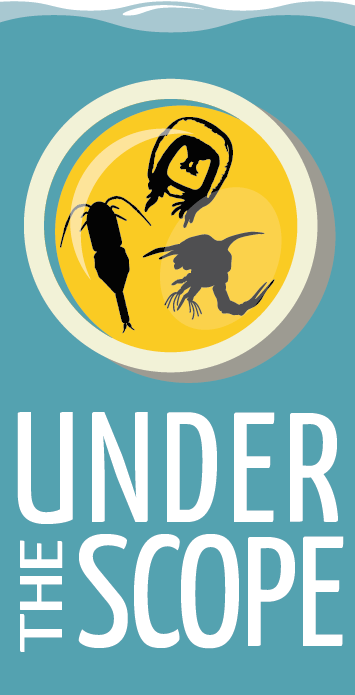How to Collect and Identify Plankton

So you’ve decided you want to collect zooplankton…Great! This is just the first of a couple decisions you’ll need to make before you have little critters swimming around underneath your microscope. Read more about plankton collection below, and watch the videos.
Select a station
First, keep in mind that zooplankton are most prevalent in lakes, ponds, reservoirs, and any tidal body of water such as tidal streams and rivers, bays, and coasts. Collecting in a moving freshwater stream usually doesn’t provide much of a sample. You’ll want to collect at a place that will help you answer your questions: Are you interested in a particular body of water? Do you want to sample a particular salinity range? Are you trying to sample the top, middle, or bottom of the water column, or all three? Try to envision the goals of your project and do some research about a few locations to help you decide the right place to sample. If you just want to get any kind of zooplankton, you probably won’t have to consider these factors.
Keep in mind the ease of collection when you choose your site; a floating dock is often and ideal location.
Always consider the depth of your location, especially in tidal areas.
Choose a net
The type of net you use will dictate the type of zooplankton you collect. Do you want to look at big things, little things, in between? Do you want to sample a particular part of the water column? Keep the following in mind:
Net opening: The mouth of the net can be different sizes. As you probably guessed, the larger the net opening, the more water the net samples. But be careful, particularly in shallow applications – you do not want your net to drag on the ground.
Net mesh: Nets have different mesh sizes (a measurement of the sides of the mesh squares in the fabric of the net). They are usually measured in microns, which is 1/1000 of a millimeter. The smaller the mesh size, the smaller the animals you’ll collect, and vice versa. Zooplankton nets range anywhere from 150 microns to 1000 microns, depending on what the researcher hopes to collect.
Cod End: The cod end is the bottom of the net where the fabric tapers and all the organisms are caught. Some cod ends are just bottles screwed into the bottom, but others have mesh windows to filter water as the net samples. Bottle cod ends are generally better for samples to be observed live, while filtering cod ends are better for collections to be preserved, and are easier to deploy repeatedly.
Collect a sample
The key to effective net sampling is to a pass sufficient amount of water through the net. One way to do this is to tow the net behind a boat (power, sail, canoe, kayak, etc.). Another way is fasten the net to a dock and lower it into moving water. A third option is to throw the net away from you into the water while holding onto an attached line, and then slowly retrieving it. This often must be repeated several times to ensure a sufficient volume of water is sampled. In large scientific research studies, sample volumes of over 30 cubic meters are common, but this can be hard to achieve with smaller “student” nets. Regardless, all of these methods can be effective at collecting zooplankton. You choice of method will largely depend on your sampling location, and research question.
Identify your catch
We’ll expand on this section later. For now, see our zooplankton identification guide on the Who Am I page.
Plankton as pets
With a little care, zooplankton can be kept in the lab or classroom. After collection, inspect your zooplankton sample. If it appears dense, you will want to dilute the sample with water from your collection site. Plankton are happier when they have space to swim, eat, and breathe without bumping into too many neighbors. Speaking of breathing, you will also want to supply your new pets with light aeration. Zooplankton should be fed liberally, and many can be sustained on larval brine shrimp (Artemia). Artemia cysts (i.e. eggs) are commercially available and easy to hatch yourself. For the best hatching results, add your cysts to a separatory funnel that is filled with seawater (about ½ teaspoon of cysts per 400 mL seawater). The funnel should be well bubbled and covered with plastic paraffin film or plastic wrap. For speedy results, you may place the funnel in a warm area (e.g. under incandescent light). In just 16-24 hours, you will have a fresh supply of brine shrimp hatchlings to feed your zooplankton pets! To keep zooplankton for several weeks, exchange some of the original water for freshly collected water after a week or so and replace their food supply with new brine shrimp hatchlings every few days.

